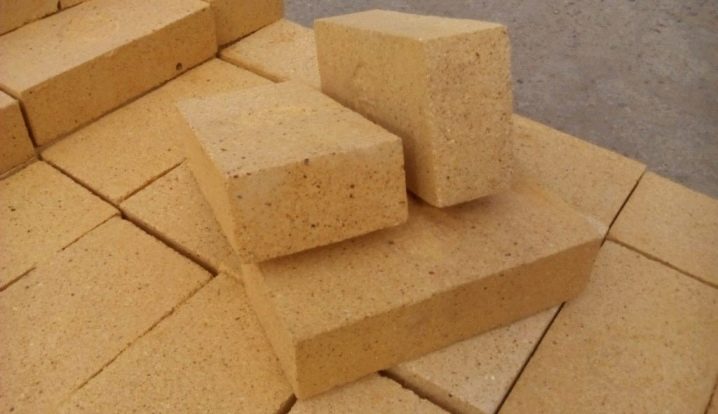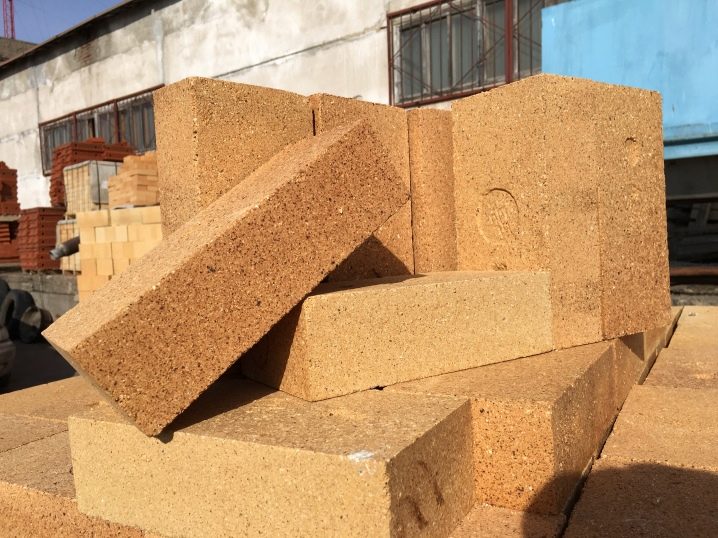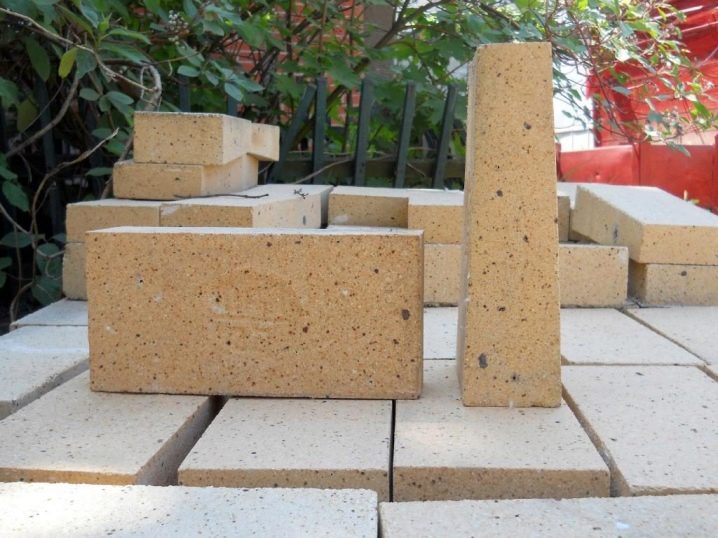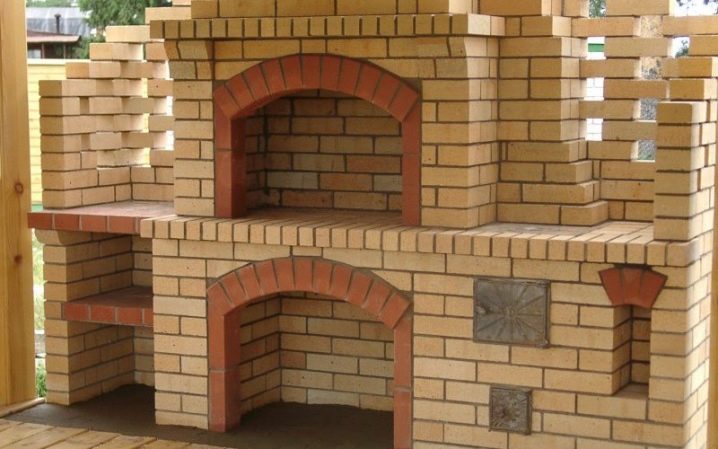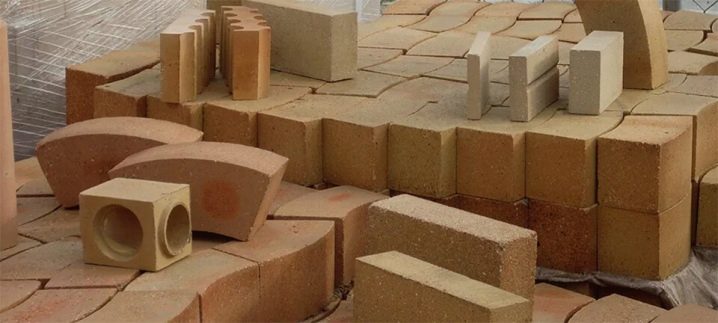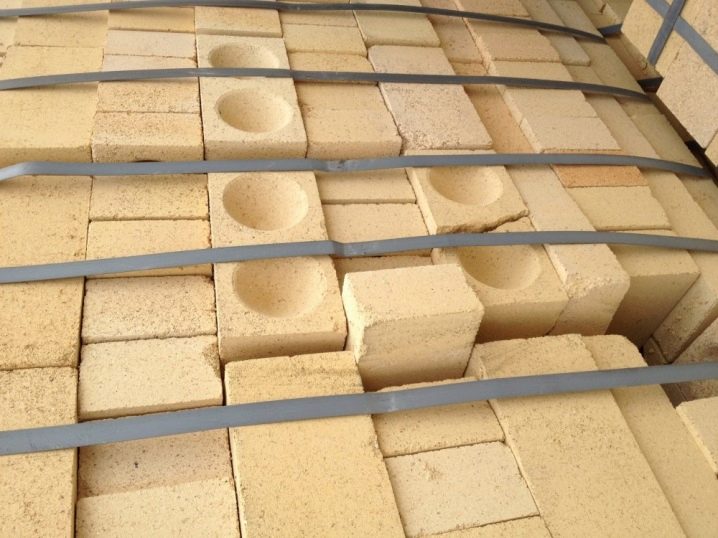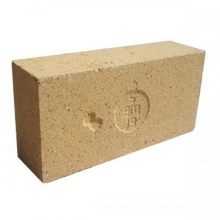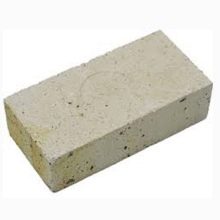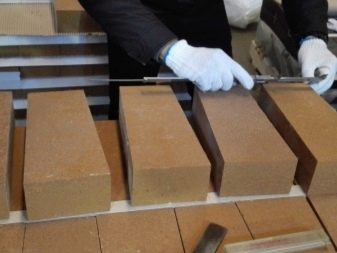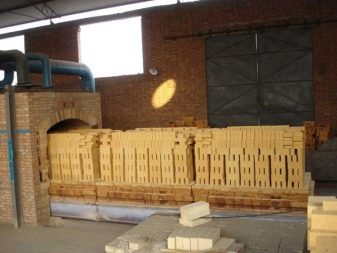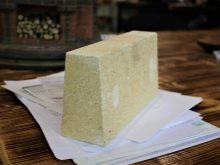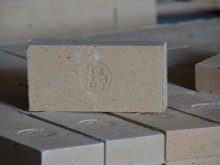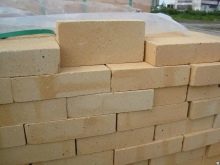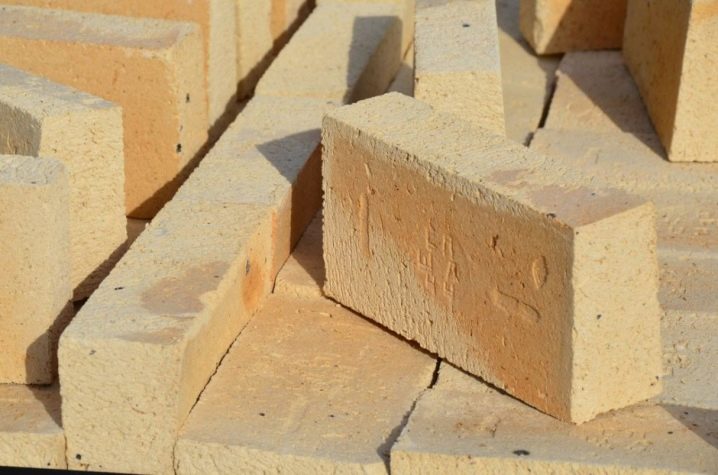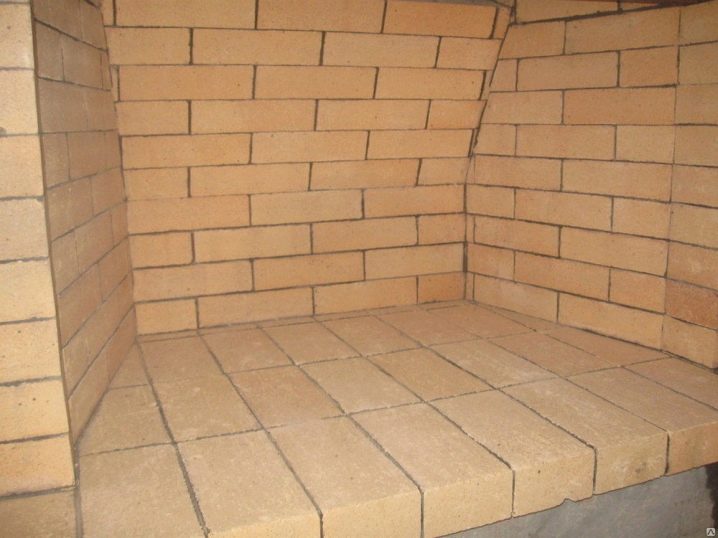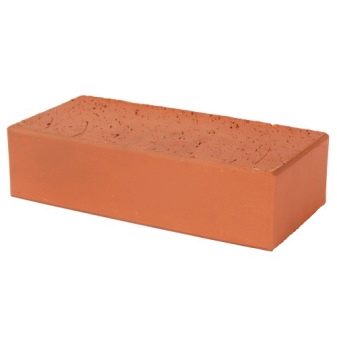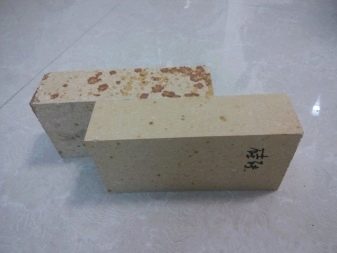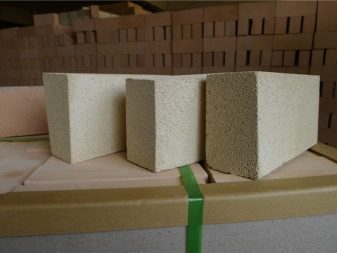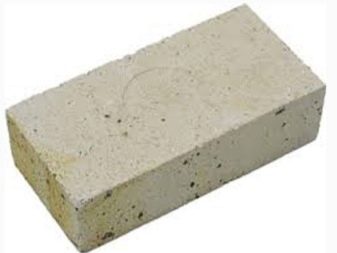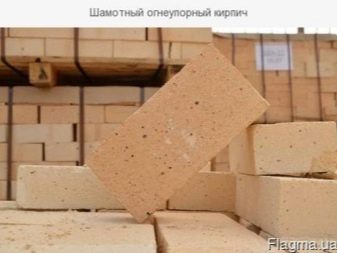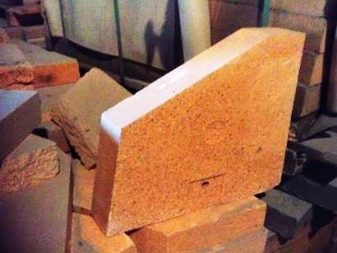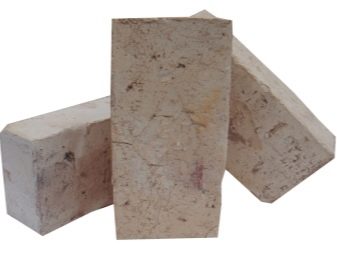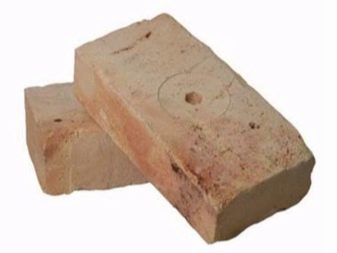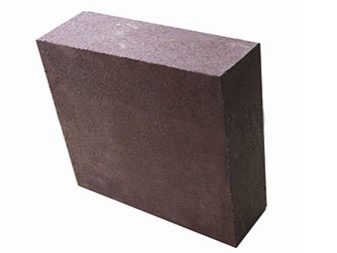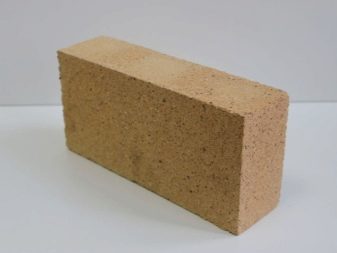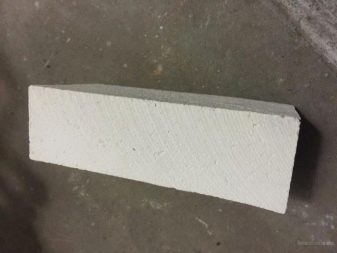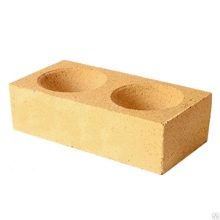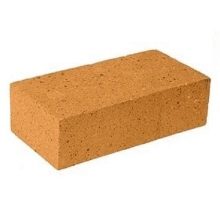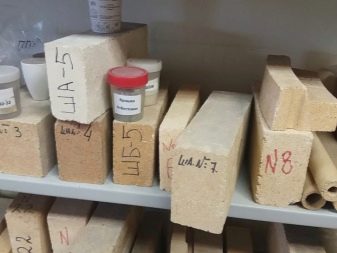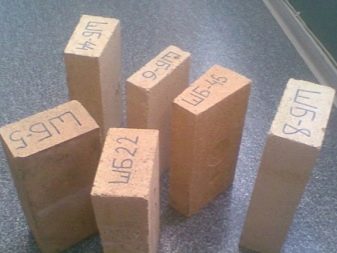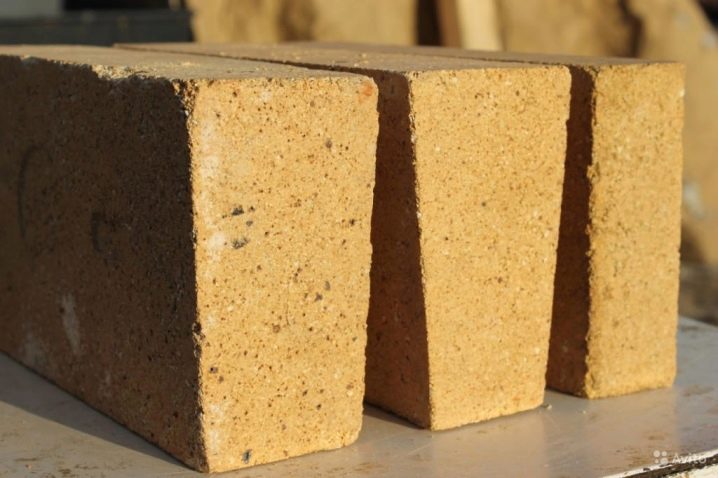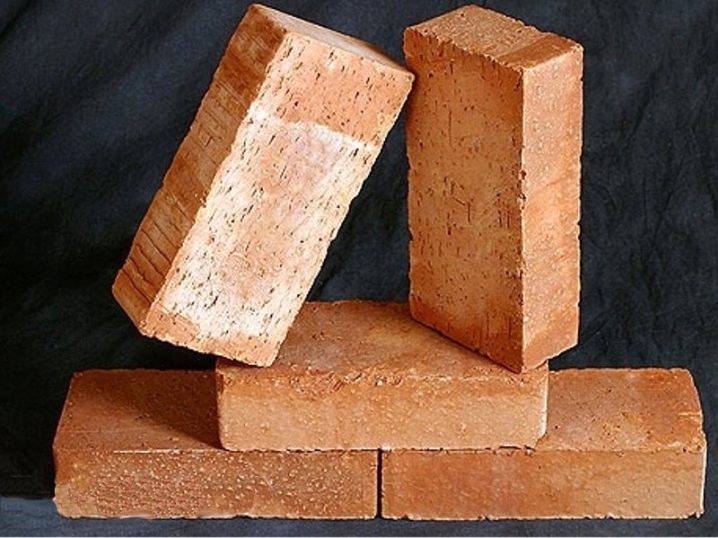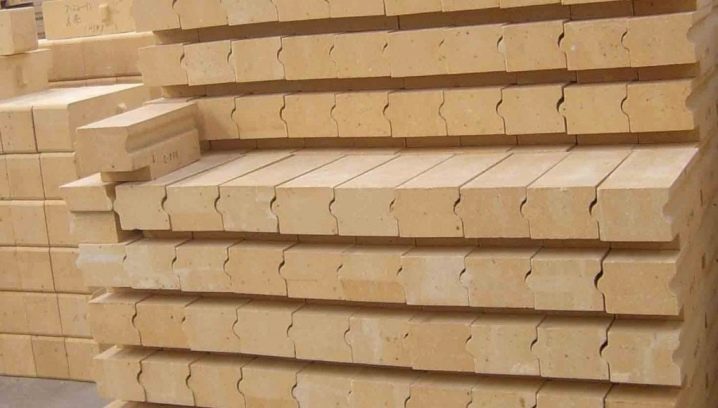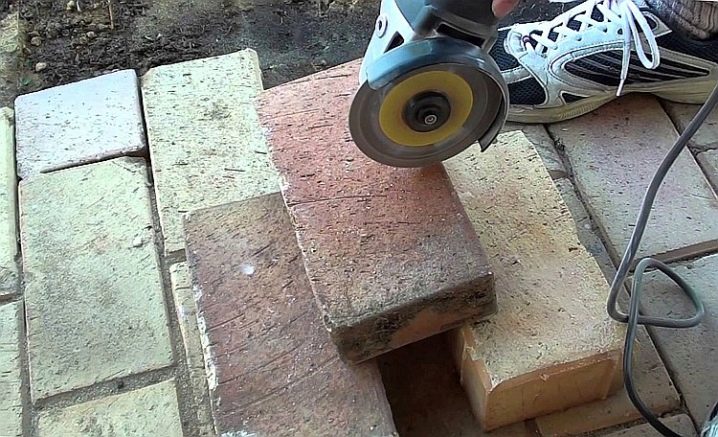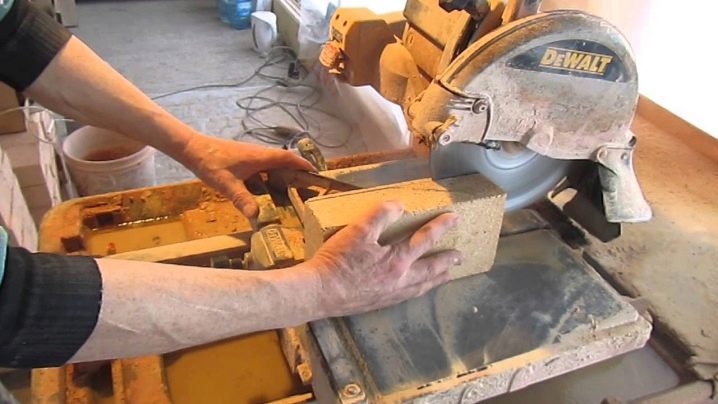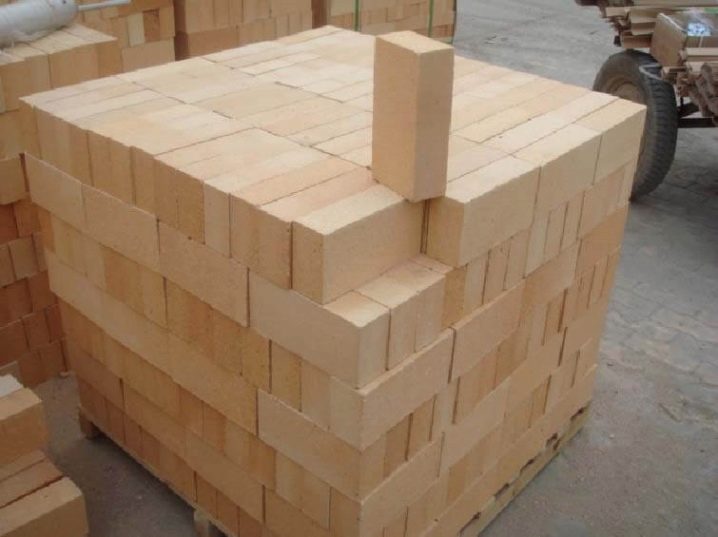Fire brick: characteristics and varieties
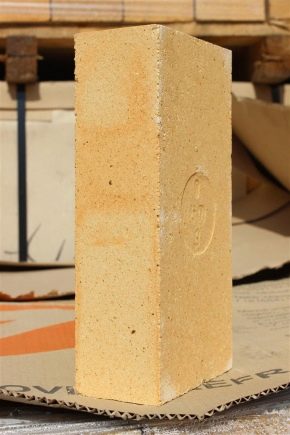
Ordinary brick is suitable for the construction of far from all structures and structures. So, for the manufacture of stoves or fireplaces, as well as industrial facilities, it is customary to use not a standard, but a special refractory material that is not afraid of high temperatures.
Today we will take a closer look at these building materials and find out what characteristics they possess.
Features and composition
The brick is one of the most popular and often found building materials, possessing a set of positive qualities. Cute brick houses are found on almost every street, so the demand for such products is not subject to doubt.
It is important to keep in mind that standard types of bricks are not suitable for all jobs.
In conditions of high temperatures, traditional bricks can quickly become unusable and undergo deformation / destruction. Here it is customary to refer to a more practical and wear-resistant refractory material, which in such circumstances will not lose its positive properties. Fortunately, in our time, you can find such products in many outlets.
Heat-resistant brick - the perfect solution when making the grounds, isolating an open flame. In addition, these resistant materials are used in case you need to trim the inner walls of household stoves, ducts, chimneys, fireplaces or pipes. The job of laying this brick (lining) is usually done by experienced craftsmen.
Many of the technical characteristics of refractory bricks are very different from the qualities of ceramic or silicate stones. The main ingredient in these building materials is clay. The remaining components in the composition of such products fall on various impurities and specialized additives.However, all additions in the composition of these materials are characterized by the fact that they retain their positive qualities even under the regular action of high temperature values.
High-quality refractory bricks are often used in industrial production. For this reason, this building material must meet a number of relevant requirements for its quality.
When choosing a suitable refractory brick, it is very important to ensure that there is not the slightest defect or damage on its surface. Such deficiencies can lead to bad consequences, for example, in the failure of a particular structure. Usually this fact provokes extra cash.
The main features and properties possessed by these reliable materials are the following parameters.
- These products are characterized by low thermal conductivity. Due to this quality, the necessary temperature conditions are always maintained inside the heat equipment.
- Such a brick is not afraid of contact with high temperatures. Even under the influence of strong heat, such materials do not lose their positive qualities and do not fail.
- Also, these bricks are distinguished by the presence of thermal inertia. It heats up in the shortest possible time, and cools down rather slowly.
- The refractory brick is characterized by an optimal heat capacity, which is sufficient for the accumulation of heat and its further transfer.
- The heat-resistant brick is not afraid of either hot gas, or metals, or slags. Not every building material can boast of such properties.
- Volumetric parameters of such products remain unchanged. They are not subject to shrinkage or additional growth.
Such materials are made in accordance with GOST and regulatory documents. As mentioned earlier, the basis of the composition of these products is refractory clay of a special grade. Usually it takes about 70% of the total brick volume.
In order to obtain blocks with different technical characteristics in the mass of the molding, use some types of additives, such as:
- coke fines;
- graphite;
- quartz powder of a large fraction.
Refractory bricks are produced using the method of semi-dry pressing. At the same time, the necessary raw materials are first prepared, the clay is thoroughly crushed and kneaded. Next, enter the mixture.The composition is adjusted to a uniform consistency. At this time, water is added to it (no more than 10%). This component is necessary for the solution to acquire the proper level of humidity.
The prepared mass is transferred to a special bunker. After that, the composition is sent to the dispenser, moving back and forth. When the parts are formed, they are usually sent straight to the bottom punch of the mold that goes down with the workpiece. After that, the upper half of the press goes down on the bricks. Products are under such pressure that they are more dense.
The lower punch at the end of the production work squeezes the brick out of the mold. At this time, the carriage with the dispenser moves to the firing in a temperature of 1000 degrees. If the bricks are produced in accordance with this technology, they will not need to be dried, so they take less time to prepare. In addition, the described method is much cheaper than plastic molding.
Advantages and disadvantages
Refractory bricks, like other building materials, have both positive and negative sides.
First you should be familiar with the positive:
- In most cases, these products are lightweight, so working with them is convenient;
- are high strength - they are very difficult to damage or break;
- able to withstand very high temperatures;
- differ in heat capacity and thermal inertia;
- may have different shapes and sizes;
- without consequences transfer temperature fluctuations;
- do not fear negative external factors;
- have an attractive appearance and different colors, for example, white or red (the most popular options).
Now you should familiarize yourself with the shortcomings of these products:
- they are quite difficult to cut and sawn, because they have high strength;
- have higher cost than standard products.
Specifications
Modern heat-resistant brick has its own technical characteristics, which you definitely need to be familiar with if you are going to work with this building material.
Consider a list of the main characteristics inherent in such bricks.
- Low level of thermal conductivity - thanks to a brick of this type, it will be possible to maintain the required temperature in the inner part of thermal units.
- Heat resistance is the main technical characteristic and distinctive feature of this building material. Heat-resistant brick is able to withstand the effects of temperatures of more than 1,500 degrees.
- The modern fire-resistant brick is not afraid of aggressive chemicals.
- Such products leave plants with the following dimensional parameters: 23 x 6.5 x 6.5 cm, 230 x 114 x 75 mm, 230 x 114 x 40 mm, 250 x 124 x 65 mm and 345 x 150 x 75 mm. Deviations from the listed dimensional parameters are permissible, but very small. For example, the thickness of a brick can differ by no more than 2 mm, length - up to 5 mm, width - up to 3 mm.
- Thermal conductivity of such building materials is rather low.
Kinds
You should not think that the heat-resistant brick has no subspecies. Today on the market you can meet several varieties of similar products. Let's get acquainted closer with the most popular and demanded products and their properties.
The basic variants of this material include the following options.
- Main brick. Materials with this name are used in tandem with lime-magnesia solution. Used in the steel industry.
- Carbonaceous. Material of this type most often acts as a base for domain structures.
- Quartz. The composition of these options include components such as quartz and sandstone. The specified stone is not designed for the neighborhood with other building materials. Exceptions to this rule - metal, fire. Any alkali affects the quartz brick extremely negatively.
- Alumina. This brick is considered the most common. It withstands the effects of temperatures from 1000 to 1300 degrees. Alumina blocks are famous for their ability to seamlessly withstand the effects of temperature shocks. Often, these raw materials are used in the manufacture of stoves (both domestic and industrial) and furnaces.
- Wedge. The specified brick is usually produced with dimensions of 300x300x300 mm. Often this building materials are used in the manufacture of industrial structures. It is labeled SHCU.
- Half acidic. The specified brick is issued with marking PB. Its refractoriness is limited to 1670 degrees Celsius. As for the porosity of semi-acidic material, it is 24%. The content of additional components in these products varies from 14 to 28%.
- Magnesite. Magnesite bricks can boast excellent refractory qualities.In their production, such a component as magnesite is burned under the action of high temperatures (1500-1600 degrees). As a result of this treatment, very strong and heat-resistant products are obtained, which are permissible to be used in industrial fields.
- Lightweight. The lightweight brick is not less popular now. This wear-resistant and durable material easily carries the effects of aggressive chemicals, has a low weight. Basically, such light raw materials are used for the manufacture of evaporators, steam traps, boilers and other devices. It is easy and convenient to work with him, because it weighs very little, especially in comparison with analogues.
In addition to these, there are other subtypes of wear-resistant refractory bricks, for example:
- silica;
- aluminum silicate;
- mullite;
- dinasic;
- corundum and others.
Popular brands
All refractory bricks are labeled in accordance with their properties and composition. So, the first letter in the brand denotes the name and a certain type of product. If this is the letter "Ш", then the stone is fireclay, if "D" is dinas, and if "M" is mullite.
As for the second letter in the marking of heat-resistant building materials, it is designed to demonstrate the highest temperature for which the stone is designed. For example, The most popular products are:
- Sha, Shack 1400;
- SB 1350;
- ШУС, ШВ 1250;
- PB (half-acid view) 1250;
- PV 1250.
Dimensional parameters of heat-resistant bricks are recognized by digital designation, which precedes the first two letter designations of the brand of the product. For example, the product ША 5 is produced with dimensions of 230х114х65 mm, and products with the marking ША 8 have dimensions 250х124х65 mm.
There are also products with markings SB 22, which have a trapezoidal shape. Their dimensional parameters reach 230x114x65x55 mm. After the numerical designations in the marking are alphabetic characters representing the abbreviation of the plant that manufactured the product.
How to choose?
The choice of refractory bricks should be approached especially responsibly, because very important tasks are assigned to it. This building material must seamlessly coexist side by side with high temperatures and sometimes open flame.
When choosing a refractory brick it is necessary to rely on the following important criteria.
- Size, weight. It is extremely important to select quality materials of suitable sizes. It is advisable to calculate before buying, the amount of materials you need. It is better to purchase them with a small margin so as not to face a shortage of building materials.
- Mark. On the packaging with bricks always indicate the brand to which they belong. You can not leave this mark without attention, because it will depend on it, the material is suitable for certain works or not.
- Quality bricks. One of the most important positions is occupied by the quality of fire-resistant bricks. In no case should there be any defects on it, otherwise the construction of this building material will not turn out to be the most reliable and robust, which can lead to very sad consequences.
- Number of pores. In refractory bricks there should not be too many pores in the structure. This can increase the hygroscopicity of the blocks, which is undesirable for furnaces. Due to the impressive hygroscopicity, the stone can be crushed and deformed, and with it the entire structure will collapse.
- Surface. Take a closer look at the surface of the fire resistant brick. It should not have a noticeable glow.If such is still visible, it will indicate that the workpiece in the manufacturing process were perekaleny.
- Sound. Not every consumer knows that the quality of a brick can be determined by the sound that comes from it when struck. To check the condition of the material, lightly tap it, for example, with an iron object. The sound from the brick should emanate clear and sonorous. If he is deaf, then the purchase of such building materials is better to refuse.
- Colour. It is important to take into account the fact that its quality does not depend on the color of the heat-resistant brick. A building material can have almost any shade, for example, beige, yellow, red or beige. All that is required of you is to purchase a batch in which all the bricks will have the same color. If in the packed row at least 1 piece turns out to be of a different color, then it will stand out sharply against the general background.
- A store. Experts strongly recommend buying refractory bricks only in trusted outlets that have a good reputation in the city of your residence.
It is advisable to request the seller quality certificates for selected products.If you are refused the presentation of documents, then it is better to refuse to buy a brick - it may turn out to be of poor quality.
How to cut?
Many users are wondering what can be cut through a refractory brick effectively. And this question is very relevant, because this material is high-strength and not the most flexible in cutting.
For example, common heat-resistant fireclay bricks are usually cut using a specialized machine.
It is also permissible to apply to the grinder with a segment diamond disk mounted on it. However, this tool has no coolant supply function.
The problem can be solved if the bricks are arranged in advance in a tank filled with water for about 20 minutes. After this procedure, they will be easy to process, as if a tool with a fluid supply was used.
Useful tips
Use only high quality refractory bricks with ideal dimensional parameters. The accuracy of the shapes and sizes of these products is governed by GOST 8691-73. Note that only minimal deviations from the standard are permissible.
Keep in mind that heat-resistant carbon bricks and options based on refractory metals are usually not used in the construction of conventional household stoves, lining of combustion chambers or the manufacture of reinforcement structures. Such species are usually allowed in only when it comes to industrial facilities.
If you are facing a fireplace with a refractory brick or a furnace in the house, then you should pay attention to the condition of the old joints. If they are dry, then they need to be finalized, otherwise the finishing may later move away from the base.
Remember - when falling, high-quality refractory bricks should not crumble. It should break up into fairly large pieces.
It is not recommended to use materials with a white coating on the surface - these are limestone deposits. Materials with similar defects in construction work should not be used.
Do not confuse fireclay and kiln bricks. Kiln options make of red clay. They do not have refractory qualities.
Learn more about refractory bricks, suitable for laying stoves or fireplaces, learn from the video below.
